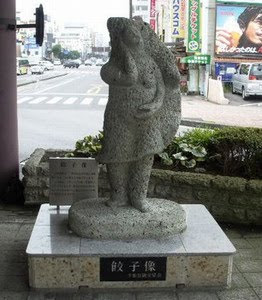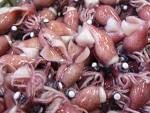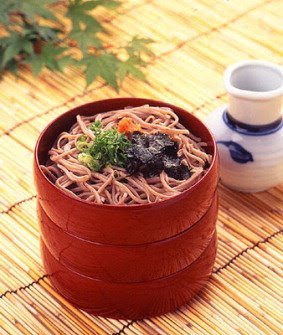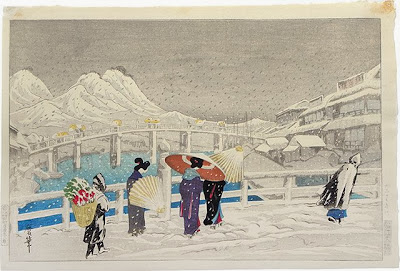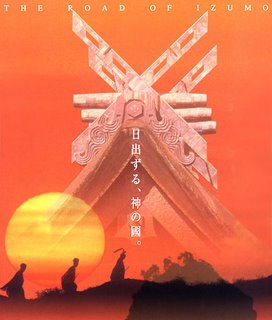::::::::::::::::::::::::::::::::::::::::::::::::::::::::::::::::::::::::::::::::::::::::::::::::::::
Tottori
***** Location: Japan
***** Season: Topic
***** Category: Humanity
*****************************
Explanation
Tottori, the sand dunes and camels ...
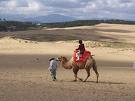
Mitoku San, Temple Sanbutsu-Ji
Izumo Kaido, The Old Road of Izumo 出雲街道
Sakai Minato, the fish port
境港さかなセンター Sakai sakana sentaa "Fish Center"
CLICK here for PHOTOS !
with a huge restaurant
kaniguratan baagaa カニブラタンバーガー burger with crab gratin
kanitoro don カニトロ丼 donburi with crab meat and thunafish hack
CLICK here for PHOTOS !
Daisen, Mount Daisen in Tottori 大山
. ishigamaryoo ishigama ryoo 石がま漁
fishing in artificial stone islands
at the lake Koyama-ike 湖山池. With a special bento for the fishermen.
. WASHOKU
Karo-ichi Seafood Market, Fish Market 賀露みなと
and more about
. GeGeGe no Kitaro (ゲゲゲの鬼太郎)
cartonist Mizuki Shigeru 水木しげる
:::::::::::::::::::::::::::::::::::::::::::::::::::::::::::::::::::::::::::::::::::::::::::::::::::
WASHOKU
Sweets from Tottori
ago no yaki あごのやき chikuwa from flying fish
ago is tobiuo.
Tobiuo comes to the coast of Tottori and Sanin during may to june to lay eggs.
It is then also eaten as sashimi or fried at the beach or made to kamaboko. One of the "sakana snacks" for drinking sake.
. . . CLICK here for Photos !
aji okowa 味おこわ tasty rice gruel with red beans
Prepared for festivals and celebrations. In the mountains prepared with mountain vegetables, along the coast with red ark shells (akagai).
Daisen okowa 大山おこわ rice gruel from Mt. Daisen
for the mountain ascetics of the area, with a lot of mountain vegetables
Daisen soba 大山そば Buckwheat noodles from Mt. Daisen
Buckwheat growing had been introduced to the area by Holy Gyoki. They have a black skin.
Named after the famous Mount Daisen.
Daisen hyakusai shoku 大山百歳食(だいせんひゃくさいしょく)
Food from Mount Daisen to live for 100 years
Especially healthy food combinations of local food from the mountains, the sea and the foothills of Mount Daisen.
http://www.yonago-navi.jp/p/monthly/4/
daizujiru no zooni 小豆汁の雑煮
zoni soup with soybeans
for important celebrations.
Soybeans are cooked with sugar in the soup, mochi are added.
Dorayaki どら焼き filleld sponge cake from Marukyoo 丸京製菓

gooko 板井原ごうこ radish pickles from Itaibara
Chizu town 板井原集落 智頭町
Itaibara daikon 板井原大根(いたいばらだいこん)
This small radish is planted in a very mountainous area, where even now cars hardly reach the houses. The fields are usually fertilized with ashes when the forest is burned down.
It is pickled as takuan from November to mid-December in red rice bran from mochigome. It is usually eaten first in May for the Chizu Doodan Matsuri 智頭どうだんまつりfestival.
. . . CLICK here for Photos of the festival !
horusoba ほるそば fried Chinese noodles with innards (horumon)
horumon soba ホルモンそば
a kind of yakisoba, often eaten after a meal of yakiniku meat.
. . . CLICK here for Photos !
igaimeshi いがいめし rice with sea mussles
dish for summer and o-bon season.
igisu イギス igisu seaweed dishes
igisugusa いぎす草 is a kind of seaweed of the tengusa family. Best harvested in summer and important for shoojin ryoori vegetarian temple dishes. Very healthy food.
. . . CLICK here for Photos !
imobota いもぼた satsuma imo and botamochi mix
mochi ricecakes with sweet potatoes. They come in three colors.
. . . CLICK here for Photos !
Inari Sushi (inarizushi いなり寿司)
itadaki いただき rice dish
rice cooked with various ingredients (takikomi gohan) wrapped in aburaage tofu.

iwashi dango いわし団子 sardine dumplings
From Sakai minato at the beach Yumigahama. Made from April till May. Round balls are put on sticks and skewered on the grill.
***** Iwashi 鰯 (いわし) sardines KIGO List and FOOD
Izumo Soba, Shimane Wariko Soba 割子そば(わりごそば)
and more Izumo specialities
kaki no ha sushi 柿の葉寿司 sushi wrapped in persimmon leaves
From the mountainous regions of Chuugoku sanchi and Mt. Daisen area.
Prepared for Obon. With saltes masu fish. Important souce of protein for the mountain areas.
kanimeshi かにめし, kanijiru カニ汁
crab rice, crab soup
konan karee コナンカレー Conan curry
名探偵コナン 魅惑の鳥取牛カレー
鳥取県三朝町山田の食品総合商社 Tottori, Misasa

The cover features persons from the famous manga detective CONAN, who's creator Aoyama Gooshoo 青山剛昌 was born in the villag here in 1963.
With secret ingredients, like Tottori beef, soup from local chichen, long yam potatoes (naga-imo) and fruit from Tottori, Hokuei Choo 北栄町, which the eater has to guess.
This product was developed to help the local community with a hit product and sells well in all of Japan now ! They even think about hitting the international market.
Conan, the Manga
Tottori is famous for its various blends of curry.
カレー王国鳥取県
Kurayoshi mochi shabushabu 倉吉餅のしゃぶしゃぶ
mochi shabu 餅しゃぶ
Thinly sliced mochi in various flavors and colors are served and dipped in hot broth before eating. Pork is also served.
nashi 梨 なし japansese pears
nonoko ののこ a kind of inarizushi
Mostly prepared in winter at the beach Yumigahama. The wrapper looks like a hanten coat (nunoko) worn in winter.
. . . CLICK here for Photos !
nonoko meshi ののこめし rice with hijiki, shirataki, chikuwa and many other ingredients.
oogongani, oogon kani 黄金蟹 "golden crabs"
Goldkrabben
. . . CLICK here for Photos !
rakkyoo no amasuzuke らっきょうの甘酢漬け
shallots in sweet vinegar
. . . CLICK here for Photos !
sakyuu nagaimo no sashimi 砂丘長芋のさしみ
long yam from the sand dunes as sashimi
eaten raw or ground as tororo.
or as steak with chicken and miso.
長芋ステーキ鶏肉味噌
samoebi, samo-ebi サモエビ samo-shrimp
even sweeter that normal ama-ebi. They are usually not shipped to other parts of Japan.
sutamina nattoo スタミナ納豆 "stamina natto fermented beans"
Chicken minced meat fried with a bit of ginger and garlic, then let cool down. Small cut natto beans are added, and aonegi chives. For a special flavor, a drop of tabasco is added.
This is even served as schoo lunch and the kids just love it !
. . . CLICK here for Photos !
tochimochi とちもち dumplings from horse chestnuts
toofuchikuwa, toofu chikuwa 豆腐竹輪 / 豆腐ちくわ Tofu Chikuwa
Tofu dishes
Local Food from Tottori 鳥取の郷土料理

*****************************
Worldwide use
*****************************
Things found on the way
*****************************
HAIKU
*****************************
Related words
***** WASHOKU : Regional Japanese Dishes
***** . Folk Toys from Tottori .
:::::::::::::::::::::::::::::::::::::::::::::::::::::::::::::::::::::::::::::::::::::::::::::::::::



